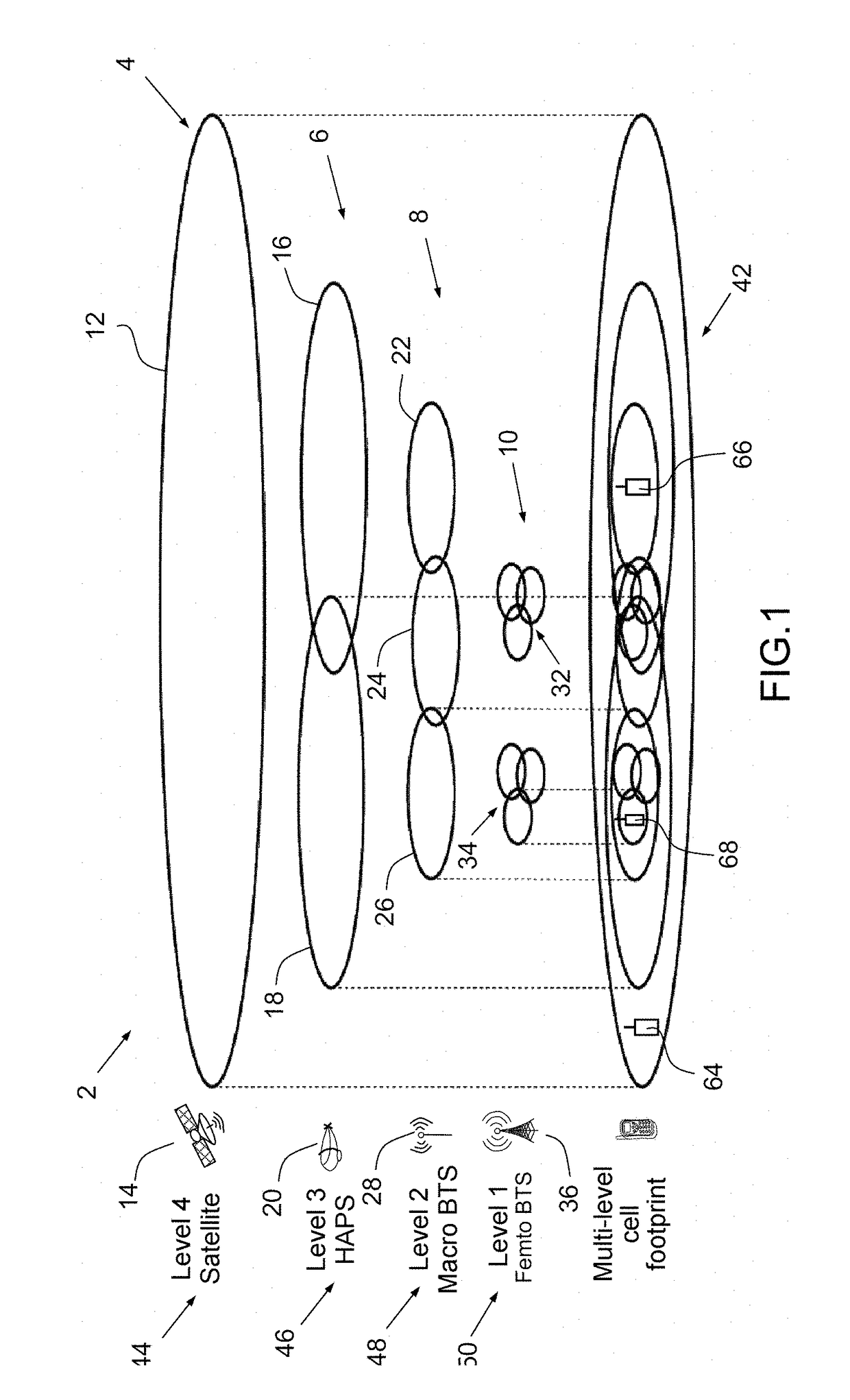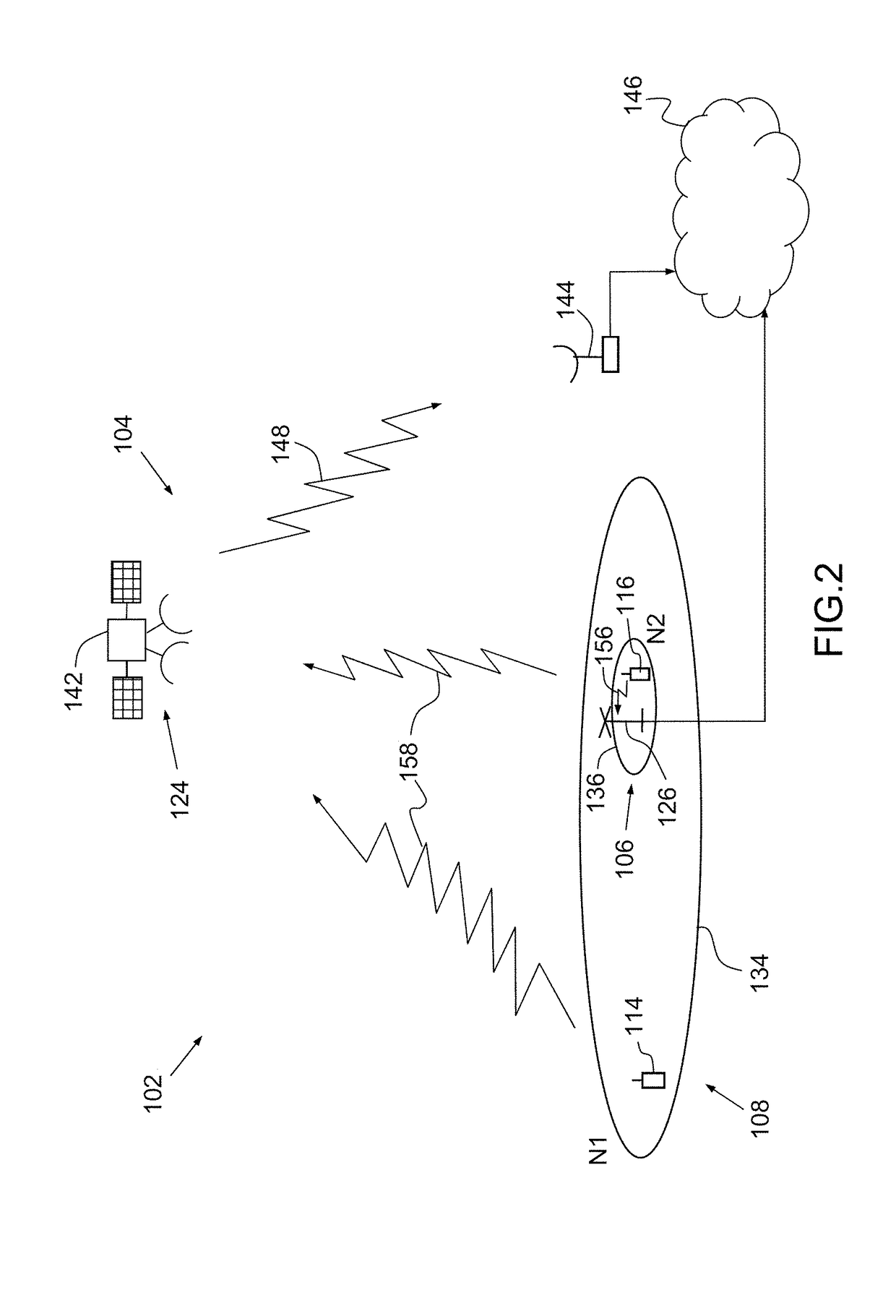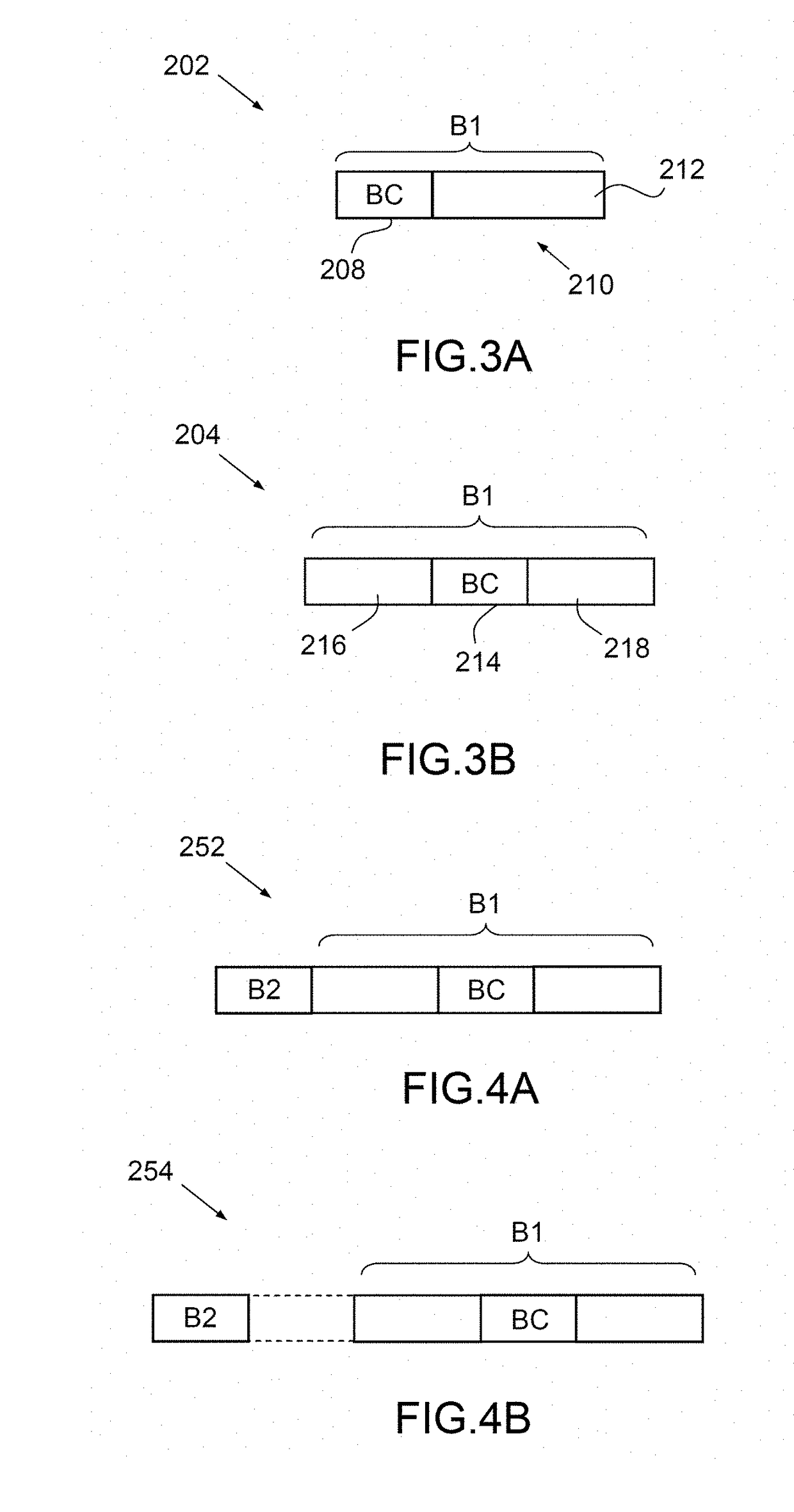Integrated radio communications system using an ordered hierarchical cellular coverage
a radio communication system and hierarchical technology, applied in the field of integrated radio communication systems with, can solve the problems of affecting the quality of service for real-time applications, affecting the quality of service for data switching networks, and high service cost and terminal costs of geostationary network infrastructures
- Summary
- Abstract
- Description
- Claims
- Application Information
AI Technical Summary
Benefits of technology
Problems solved by technology
Method used
Image
Examples
first embodiment
[0103]Generally, and the integrated system 102 according to the invention is characterized in that the first system 104 and the second system 106 are configured to simultaneously share a common portion Bc of a first band B1 of frequencies respectively on the first uplink 158 and the second uplink 156, and respectively manage first transmission resources and corresponding second transmission resources.
[0104]According to FIGS. 3A to 3B, a first example 202 and a second example 204 of frequency plans of the first and second systems 104, 106, taken together, are illustrated.
[0105]In the first example of frequency plan 202, a common portion Bc, designated by the reference 208, of frequency band shared by the first and second systems, 104, 106, is included in and situated at a bottom end of a first band B1, designated by the numeric reference 210. The remaining band in a single block and adjacent on the right in FIG. 3A, defines a band 210 dedicated exclusively to the second system 106.
[...
second embodiment
[0192]According to FIG. 9 and the method, an integrated cellular radio communication method 652, derived from the integrated cellular radio communication method 602, comprises the same first and second steps 604, 606.
[0193]The integrated method 652 differs from the integrated method 602 in that, upon its implementation, the first system is configured to manage first additional resources using a second band of frequencies reserved exclusively for the first uplink and the first shared resources of the common portion of the first band, characterized by time slots and / or frequency slots and / or access codes, optimally in terms of maximum transmission capacity of the random channel and of minimization of the rate of collision on the random channel.
[0194]The integrated method 652 differs also from the integrated method 602 in that the third and fourth steps are respectively replaced by fifth and sixth steps 658, 660.
[0195]In the fifth step 658, based on the measurement of the occupancy of ...
PUM
 Login to View More
Login to View More Abstract
Description
Claims
Application Information
 Login to View More
Login to View More - R&D
- Intellectual Property
- Life Sciences
- Materials
- Tech Scout
- Unparalleled Data Quality
- Higher Quality Content
- 60% Fewer Hallucinations
Browse by: Latest US Patents, China's latest patents, Technical Efficacy Thesaurus, Application Domain, Technology Topic, Popular Technical Reports.
© 2025 PatSnap. All rights reserved.Legal|Privacy policy|Modern Slavery Act Transparency Statement|Sitemap|About US| Contact US: help@patsnap.com



